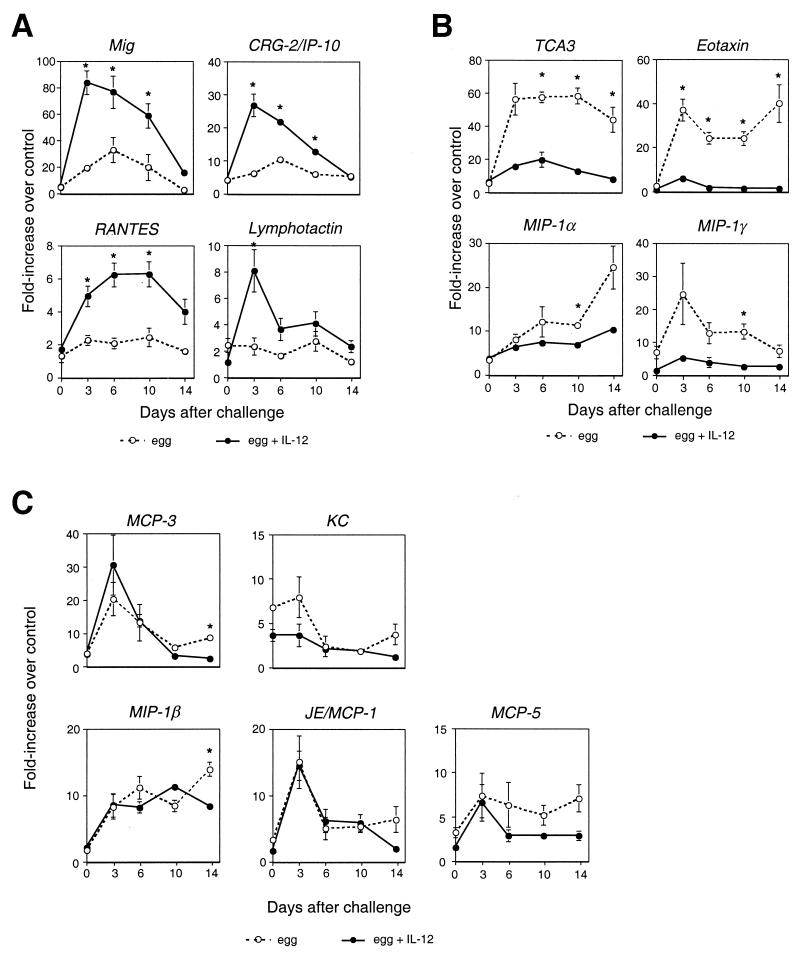FIG. 3.
Administration of rIL-12 during sensitization alters the pattern of chemokine gene expression after a secondary challenge with eggs of S. mansoni. With the exception of the gene for TCA3, chemokine gene expression was assayed by RT-PCR, as was expression of the control gene, that for HPRT. TCA3 gene expression was determined by RNase protection, as described in the legend to Fig. 2, because of difficulty in measuring TCA3 mRNA expression by RT-PCR. For the determinations by RT-PCR, chemokine gene expression was normalized to HPRT gene mRNA expression and then divided by the HPRT-normalized chemokine gene expression in the lungs of unmanipulated control mice. Values are the means of samples from three mice. (A) Chemokine genes showing enhanced expression in mice sensitized with eggs plus rIL-12 (filled circles, solid lines) compared with that in mice sensitized with eggs alone (open circles, dotted lines). (B) Chemokine genes showing diminished expression in mice cosensitized with eggs plus rIL-12 compared with that in mice sensitized with eggs alone. (C) Chemokine genes showing enhanced expression after egg challenge unaffected by prior treatment with rIL-12. Differences in chemokine gene expression were considered meaningful if there was a greater-than-twofold difference between groups at two or more time points, at least one of which was statistically significant. ∗, P < 0.05 by two-tailed Student t test for comparisons between rIL-12-treated and untreated mice at a given time point. Some error bars are too small to be seen.

